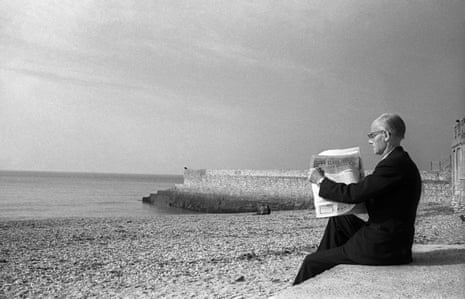On a beach in Brighton some time in the mid-70s, Paddy Summerfield sat and waited. He had spotted a man around 50 metres away, incongruously wearing a suit to the beach – perhaps an office worker on his lunch break – and Summerfield could tell the scene had potential. “He looked like a character from a Magritte painting,” he recalls. “Suddenly he lifted and folded his paper. I waited for the peak of the movement, so that it looked frozen, static, as though that was how he had always been and would be for ever. When you see a picture and you know it’s a good one, your heart skips. It’s a real adrenaline rush.”
Over 45 years, Summerfield has been travelling to coastal resorts up and down the country, where he captures black-and-white images of life by the beach while ostensibly on holiday. At 72, the photographer still takes pictures every day, but the beach provides something his home town, Oxford, can’t. “On the coast, there’s a spaciousness looking out to sea – it has a potential for images of isolated figures,” he says. “I found the life of figures on the beach ideal for picture-taking, with a clear view beyond of sea and sky, away from the clutter of the streets.”
Working with his wife and collaborator, Patricia, Summerfield has now organised the disparate photographs into a new book, with the order evoking a loose narrative. Exploring themes of isolation, disappearance and rebirth, the book reflects the influence of cinema on his work: Michelangelo Antonioni’s Blow-Up, Ingmar Bergman, Robert Bresson. “Taking pictures is the easy part – the hardest thing is to make the book about something,” Summerfield says. Unlike films, however, photographs offer “slow time”: “You can go at your own pace and examine each individual frame. You see a photograph, and it’s permanent.”
